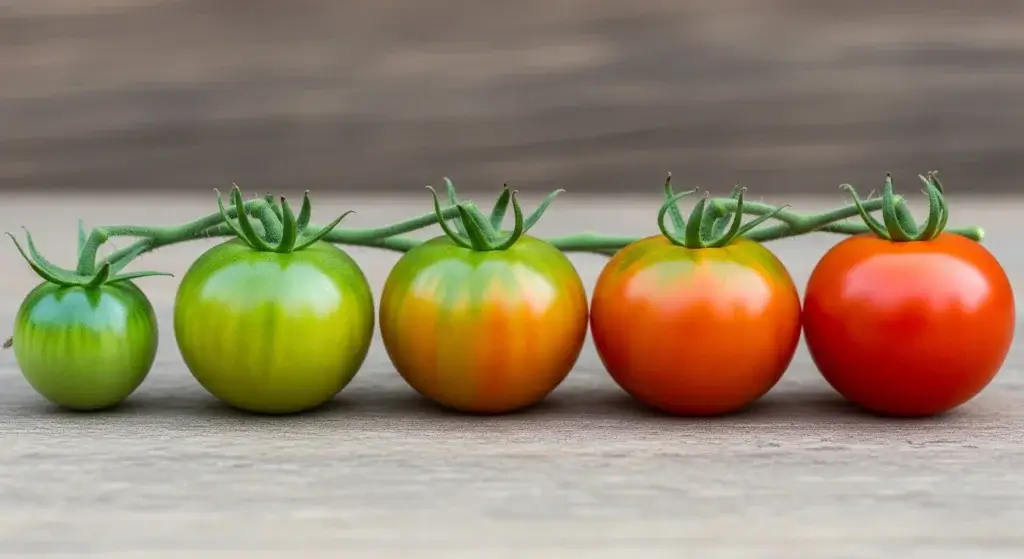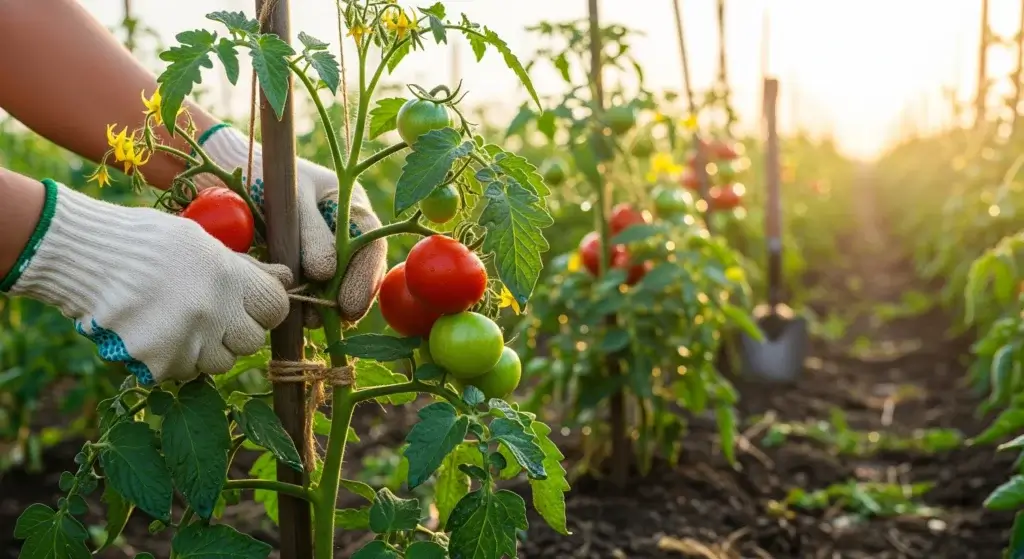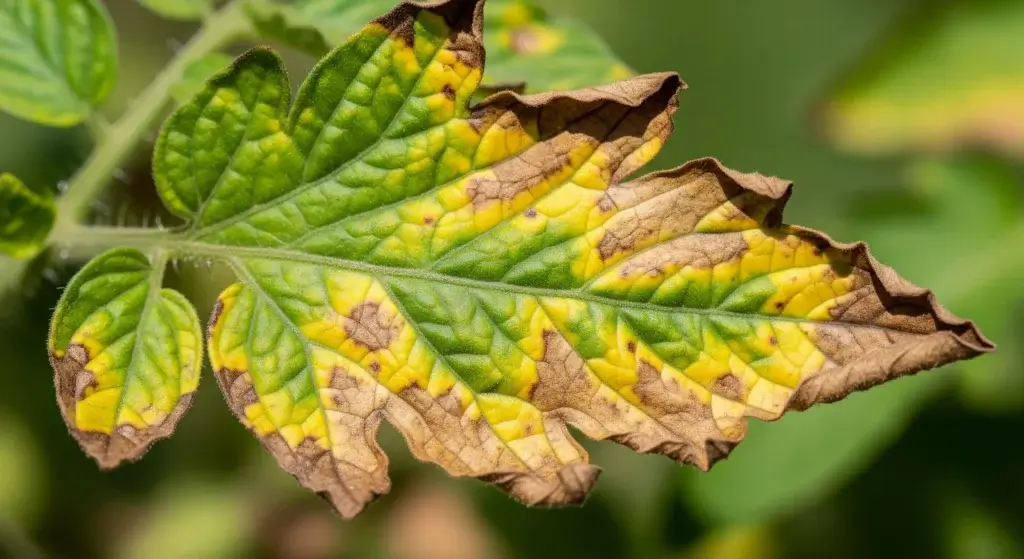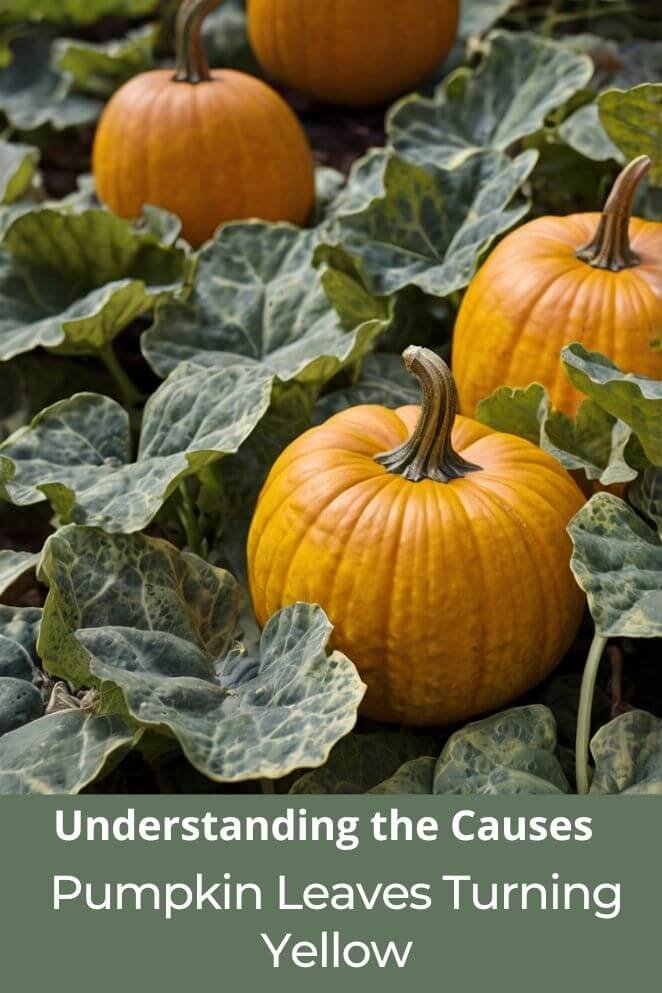
Pumpkins are a favorite in gardens and on dinner tables, but growing healthy pumpkins takes more than planting seeds and waiting for harvest.
A common problem that worries gardeners is pumpkin leaves turning yellow.
This issue can indicate underlying problems that, if ignored, may impact the plant’s health and yield.
In this post, we’ll explore the causes, how to diagnose the issue, and actionable steps to prevent and treat yellowing pumpkin leaves.
Common Causes of Yellowing Pumpkin Leaves
Yellowing leaves, known as chlorosis, are often a sign that something is off with your pumpkin plant.
Causes can range from nutrient deficiencies to environmental stress and pest infestations.
Let’s dive into the most common culprits.
Nutrient deficiencies
Pumpkin plants require a balanced supply of nutrients to thrive.
Deficiencies in key nutrients are a primary reason leaves turn yellow.
Nitrogen deficiency
Nitrogen is essential for healthy leaf and stem growth.
When pumpkins don’t get enough nitrogen, older leaves start to turn yellow, while new leaves often stay green.
This deficiency can also slow down the plant’s overall growth.
Symptoms
- Older leaves turn pale yellow.
- Stunted or slowed growth.
Solution
Boost nitrogen levels by applying a fertilizer with a balanced nutrient mix, like a 10-10-10 formula.
For a natural approach, mix organic compost into the soil to improve nitrogen availability.
Potassium deficiency
Potassium is critical for moving water and nutrients within the plant.
When potassium levels are too low, the edges of the leaves may turn yellow or brown, and the leaves might curl.
Weak stems are another sign of this deficiency.
Symptoms
- Yellowing or browning along leaf edges.
- Curled leaves.
- Weak, floppy stems.
Solution
Restore potassium balance by using a potassium-rich fertilizer, such as potassium sulfate.
This will help the plant recover and maintain its health.
Magnesium Deficiency
Magnesium is a vital part of chlorophyll, which gives leaves their green color.
A magnesium deficiency often shows up as yellowing between the veins of older leaves, while the veins themselves remain green.
Symptoms
- Yellowing between leaf veins (called interveinal chlorosis).
- Starts with older leaves first.
Solution
Add magnesium to the soil using magnesium sulfate (commonly known as Epsom salt).
You can also dissolve Epsom salt in water and apply it directly to the leaves as a spray for quicker absorption.
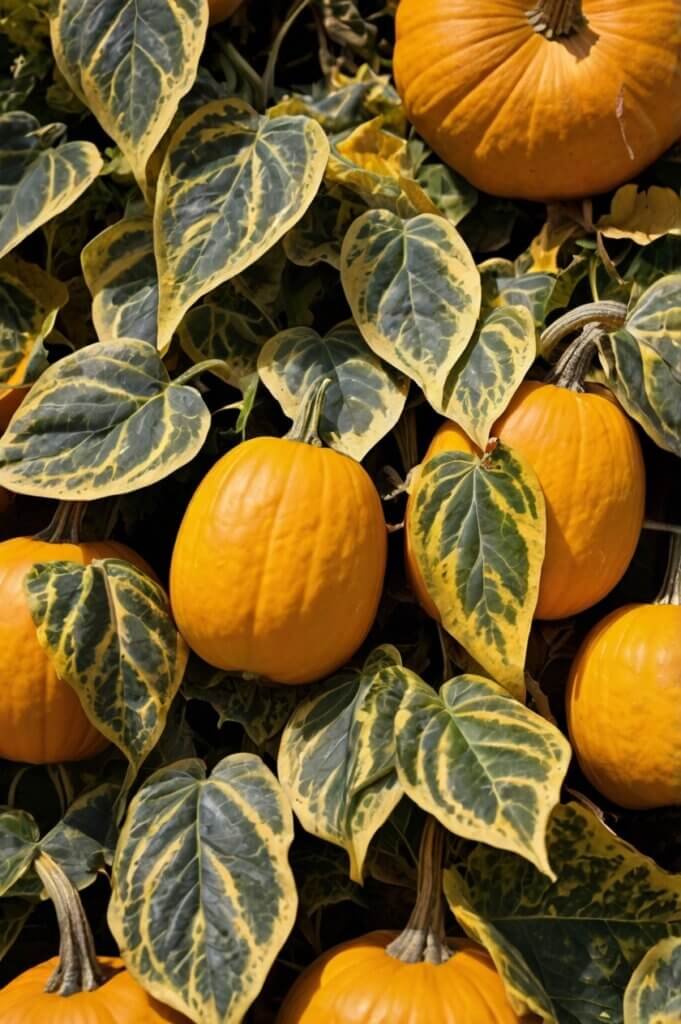
Pests and diseases
Pests and diseases can sap the vitality of pumpkin plants, causing yellowing leaves.
Powdery mildew
Powdery Mildew
Powdery mildew is a common fungal disease that starts as a white, powdery coating on the leaves.
As the infection spreads, it can cause leaves to turn yellow and eventually wilt.
This disease thrives in warm, humid conditions.
Solution
- Remove any leaves that show signs of infection to prevent it from spreading.
- Improve air circulation by spacing plants properly and pruning excess foliage.
- Apply a fungicide if the problem persists, choosing one labeled for powdery mildew control.
Downy Mildew
Downy mildew is another fungal disease that often begins with yellow patches on the tops of leaves.
You might notice a fuzzy, mold-like growth on the undersides of the affected leaves.
This disease thrives in damp conditions and can spread quickly.
Solution
- Use a copper-based fungicide to combat the fungus.
- Ensure your garden has good drainage to prevent water from pooling around the plants.
- Water at the base of the plant instead of overhead to reduce excess moisture on the leaves.
Viral diseases
Viruses such as cucumber mosaic virus can cause mottled yellow patterns on leaves, along with stunted or distorted growth.
These viruses are often spread by pests like aphids, making pest control essential for prevention.
Solution
- Remove and destroy infected plants immediately to stop the virus from spreading to healthy ones.
- Focus on controlling aphids by using insecticidal soap or introducing natural predators like ladybugs.
- Keep your garden clean and free of weeds, which can host pests and viruses.
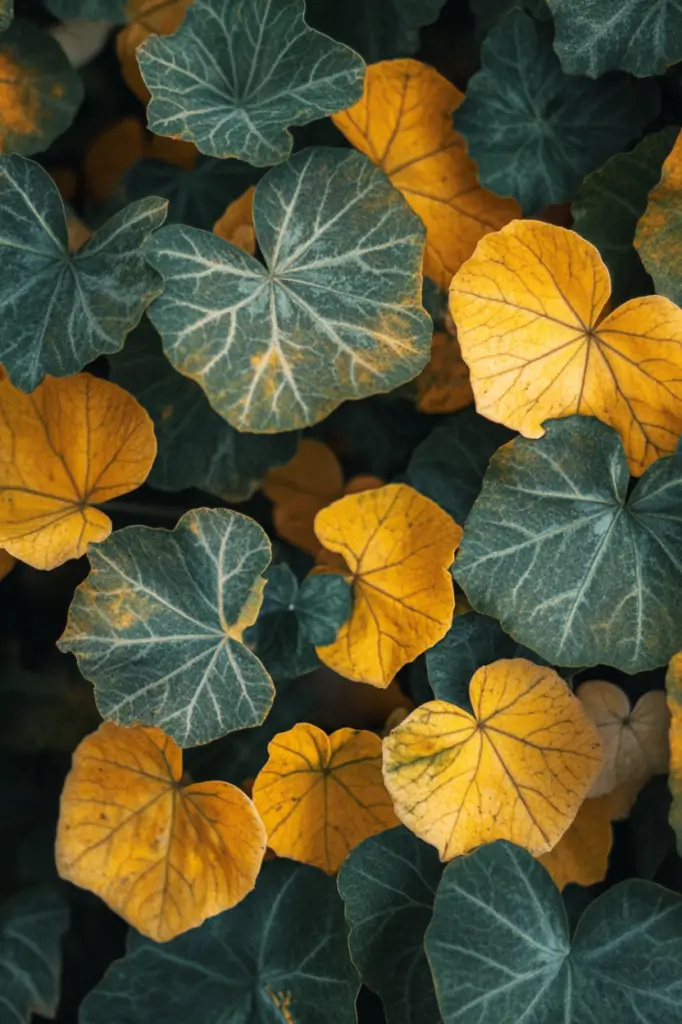
Environmental Stress
External conditions also play a big role in the health of your pumpkin plants.
Overwatering or underwatering
Watering is one of the most common issues when it comes to yellowing leaves.
Both too much and too little water can stress pumpkin plants.
- Overwatering: Too much water can lead to root rot, which prevents the roots from getting oxygen. This often results in yellow, wilting leaves.
- Underwatering: When plants don’t get enough water, they become stressed, leading to dry, yellow leaves.
Solution
Water your pumpkin plants deeply and consistently.
Aim for about 1-2 inches of water per week, adjusting based on the weather.
Always check the soil—if the top inch is dry, it’s time to water.
Extreme temperatures
Pumpkins love warm weather, but they can struggle in extreme conditions.
Prolonged heatwaves can cause the leaves to yellow from stress, while sudden cold snaps may shock the plants, leading to similar symptoms.
Solution
- Use mulch around the base of your plants to help regulate soil temperature.
- During heatwaves, consider using shade cloths to protect the plants from excessive sun exposure.
- If a cold snap is expected, cover your plants with frost cloths or blankets overnight to shield them from the chill.
Soil pH imbalance
The pH of your soil affects how well pumpkin plants absorb nutrients.
They prefer slightly acidic to neutral soil, with a pH between 6.0 and 7.0.
If the soil is too acidic or too alkaline, it can block essential nutrients, causing the leaves to turn yellow.
Solution
Test your soil’s pH using a soil testing kit, which you can find at garden centers or online.
Based on the results:
- If the soil is too acidic, add lime to raise the pH.
- If the soil is too alkaline, add sulfur to lower the pH.
- Always follow product instructions to avoid overcorrecting.
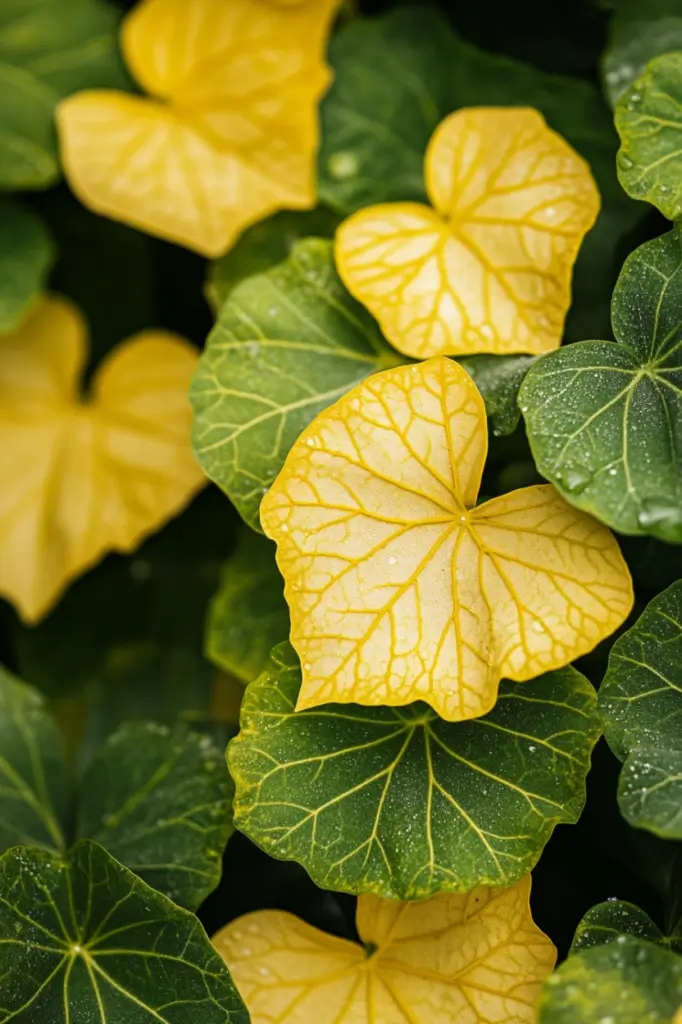
Troubleshooting and Diagnosis
Before jumping to solutions, it’s crucial to diagnose the issue accurately.
Visual inspection
Start by taking a close look at your plants.
The pattern and location of yellowing can give you valuable clues about the underlying issue:
- Old or new leaves? If older leaves are turning yellow, the issue might be a nutrient deficiency like nitrogen. If newer leaves are affected, it could signal a viral infection or a problem with pests.
- Uniform yellowing or spots? Uniform yellowing could mean a watering issue or soil imbalance, while spots might indicate a fungal disease like powdery mildew.
- Check for pests: Look at the undersides of leaves for pests like aphids or spider mites. These tiny insects can sap nutrients from the plant, causing yellowing.
Soil testing
The health of your soil is key to healthy plants.
Test your soil to determine its pH level and nutrient content:
- What to look for: A pH imbalance or lack of essential nutrients like nitrogen, potassium, or magnesium could be the problem.
- How to test: Use an at-home soil testing kit, which is easy to find at garden stores. For more accurate results, send a soil sample to your local agricultural extension service.
Consultation with local experts
If you’re still unsure what’s wrong, reach out to local gardening professionals or agricultural extension offices.
These experts understand the specific conditions in your area and can offer advice tailored to your region’s climate and soil type.
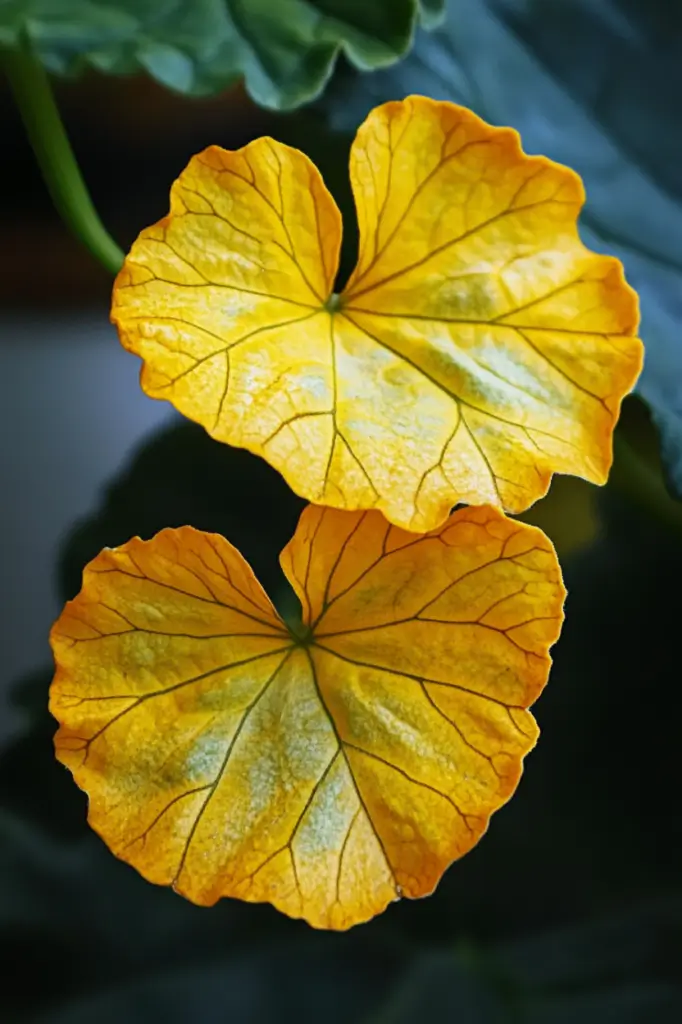
Prevention and Treatment
Taking proactive steps can help you maintain healthy pumpkin plants and avoid yellowing leaves.
Proper planting and care
Set your pumpkin plants up for success by giving them the right environment:
- Well-drained soil: Plant pumpkins in soil that drains well and is enriched with organic matter like compost or aged manure. This ensures they have the nutrients they need to grow strong.
- Plenty of sunlight: Pumpkins love the sun! Make sure they get at least 6-8 hours of direct sunlight each day.
Regular monitoring
Keeping an eye on your plants is one of the best ways to catch problems early:
- Inspect them weekly for any signs of pests, diseases, or nutrient deficiencies. Look for yellowing leaves, unusual spots, or pests on the undersides of leaves.
- Early detection makes it much easier to treat issues before they spread.
Organic pest and disease control
Prevent pests and diseases naturally with eco-friendly methods:
- Neem oil or insecticidal soap: These are effective at controlling common pests like aphids or spider mites without harming the environment.
- Beneficial insects: Introduce helpful bugs like ladybugs or lacewings to your garden. They feed on harmful pests and help maintain a natural balance.
Chemical treatments (if necessary)
When organic methods aren’t enough, chemical treatments can be a backup option:
- Use pesticides or fungicides as a last resort, and always follow the instructions on the label.
- Avoid overusing chemicals to protect pollinators and the surrounding environment.
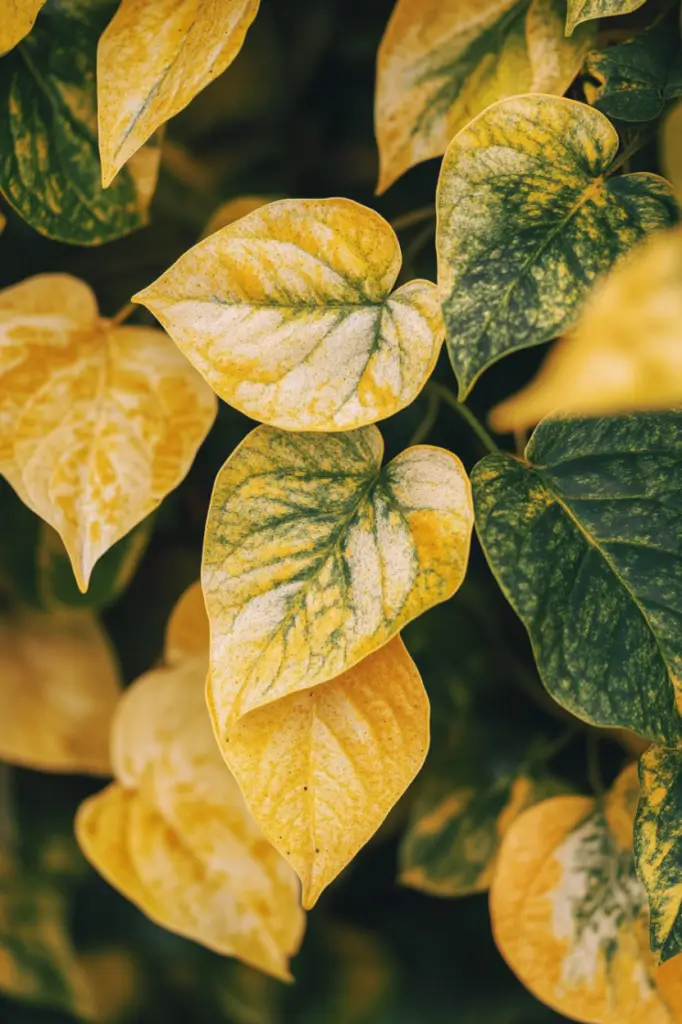
Final Thoughts
Yellowing pumpkin leaves can feel like a daunting problem, but with proper diagnosis and care, most issues can be resolved.
Whether it’s adjusting your watering routine, balancing nutrients, or combating pests, understanding your plant’s needs is the first step to a thriving pumpkin harvest.
Remember, gardening is a learning experience.
Mistakes are natural, and each one teaches you something new.
With a bit of effort and patience, your pumpkins will be back on track in no time.

